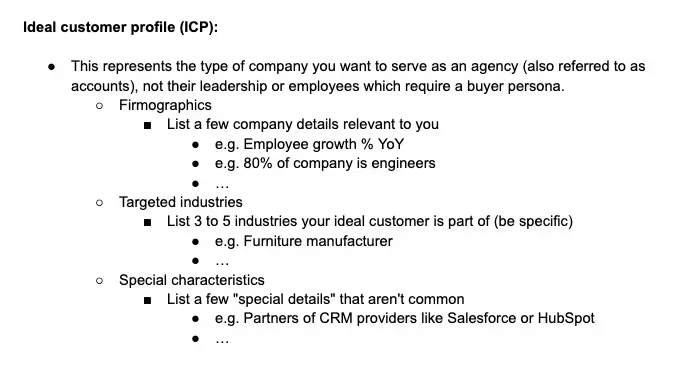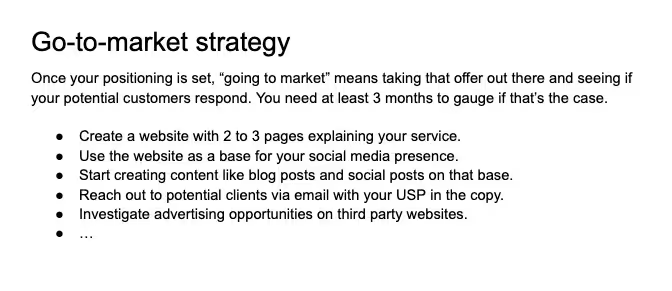Business Plan Template for Your Marketing Agency
Creating a coherent business plan for your agency takes a lot of time, and traditional methods aren't always worth it. Here's a simple template to help you start.




Creating a business plan for your marketing agency helps you document your intentions and establish a clear roadmap for sustainable growth.
This template is designed to guide you through the steps of shaping your agency by focusing on strategic positioning and robust financial management.
» MARKETING AGENCY BUSINESS PLAN TEMPLATE «

Note: This template is optimized to help you go to market quickly, you won’t find corporate mission and vision statements or complex SWOT analysis in the document. Instead, the template focuses on helping you enter the details that are absolutely essential to starting a business.
Identifying your target audience and ideal customer profile is crucial as it shapes all subsequent strategic decisions.
This clarity helps tailor your marketing efforts and services to meet the specific needs of your clients. Some of the information you should gather:
As you grow, ask customers for feedback to continuously refine your understanding of your target audience.
This ongoing process ensures your services remain relevant.

Your solution should directly address the challenges and pain points of your target audience, providing clear and measurable benefits.
Follow this simple framework:
Each service should be tied directly to outcomes that support your clients’ goals. This approach not only highlights the functional benefits but also the strategic value of your services.
As an agency in particular, you can choose to either productize your services or offer monthly retainers / agreements billed by the hour.
This will represent your business model.

Effective brand positioning differentiates your agency in the market, highlighting your unique strengths and why clients should choose you over competitors.
In this section of the template, fill out the following data:
This section sets the entire value discussion with the customer.
When you’re looking to write new copy for your website or create sales materials, look back to your brand positioning.

Your go-to-market strategy outlines how you will effectively reach and engage your target audience to generate leads and convert them into loyal clients.
Some of the channels you should consider implementing:
These are only a few of the possibilities; highlight the ones that matter most to your agency in the business plan template and make targeted investments.

A detailed financial plan provides insights into your agency’s financial health, guiding your decisions and strategies for growth.
You want to keep of 3 fundamental documents:
A lot of business plans will also focus on forecasting, i.e. looking into how much you’re likely to generate based on your addressable market, product, and marketing strategy.
My personal advice is to only run predictions for up to 6 months into the future, especially if your agency is just starting out.
You won’t know what’ll happen 1 or 2 years from now.

My personal advice?
Don’t spend time trying to write a “perfect” business plan for your agency.
I went through this process multiple times in my career and, in most cases, a document with your target audience, the solution you present to them, and some financials will do.
Unless you really want to get a loan from your bank…
Stick to the basics and go to market!
P.s. If you want to bring your agency’s services to market quicker, ManyRequests agency management platform offers a 14-day free trial, no card required.